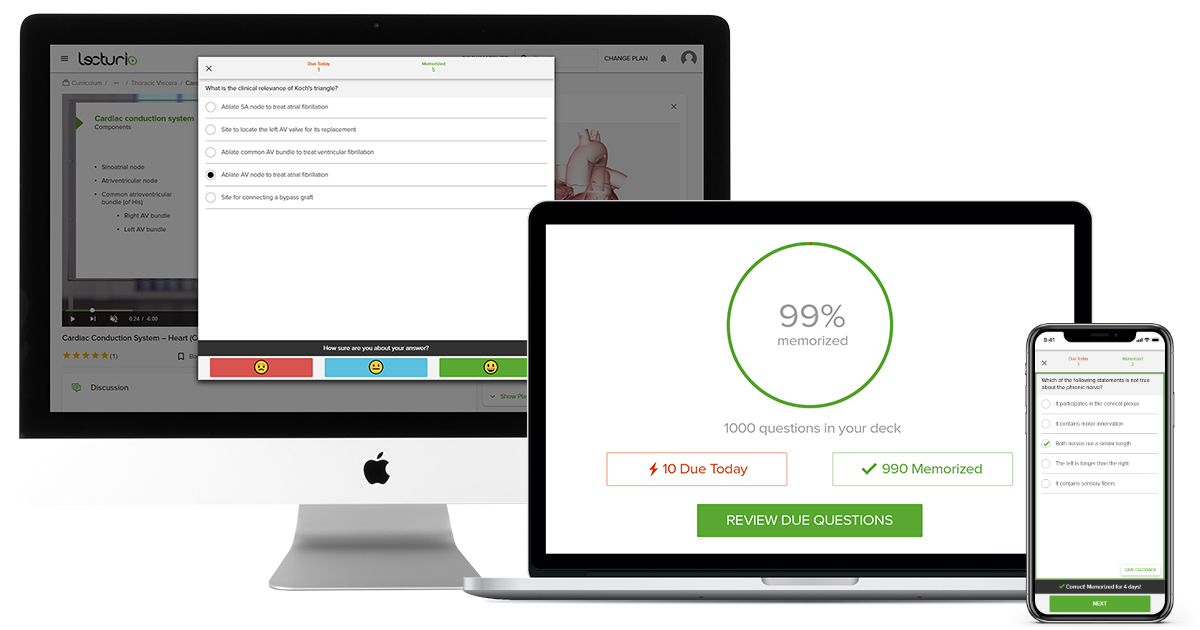How speed reading can help you study
You’ve probably heard the phrase that “Medical school is like drinking from a fire hose.” A lot of healthcare students feel this way as they are confronted with a flood of new, complex information to learn.
Learning how to read faster can help you get through a lot of information more quickly. Using proven speed reading techniques ensures that while you process the information more quickly, you don’t compromise on comprehension and memory. If used carefully, the right speed reading method can even improve your engagement with and retention of the material.
What is considered a fast reader?
The average adult reads about 200–300 words per minute, placing a fast reader at over 300 words per minute.
However, rather than an absolute measure, you should aim for improving your current speed; and only if you feel like this could help you. Some people are already relatively fast readers and getting through the material initially is not where their biggest study challenge lies.
Also, if you don’t comprehend what you are reading, speed becomes irrelevant. Never prioritize speed over being engaged with the material and understanding what you are reading.
Advantages of speed reading
The main benefit of speed reading is, of course, efficiency. Being able to read an entire chapter in much less time leaves more time for you to review difficult sections more in depth, do practice questions, study more topics, or – free time. With how demanding and time consuming studies in healthcare are, every bit of saved time is worthwhile.
Some speed reading techniques (such as previewing and chunking) not only speed you up, but additionally help you with understanding and learning itself through their structured approach (see the description of the techniques below).
Last but not least, knowing that you can read faster and get through large volumes of material quickly can reduce the stress associated with the daunting overwhelm of heavy academic loads. Feeling more in control and less stressed is always a plus.
How to read faster with speed reading techniques
Front load some effort to save time later (“previewing”)
Before you start reading a chapter or article in depth, spend a few minutes previewing it: Scan the headings, subheadings, introduction, summary, and any highlighted or bolded terms.
This technique helps you form a mental map of the content, allowing you to prioritize information and anticipate key concepts. It sets a framework in your mind, helping you to more quickly assimilate and connect the details as you read.
Stop talking to yourself (eliminate “subvocalization”)
Subvocalization is that voice inside your head that a lot of people have when they read, pronouncing the words and “hearing” them as they read. Since speaking (even silently) is always slower than thinking, this slows down your reading speed.
Practice not “talking to yourself” while reading by giving your speaking muscles something else to do (chewing gum) or consciously relaxing them.
Note: Here, as with all techniques, it depends on what you are reading. If you are stuck in an especially complicated section and need to slowly say a complex sentence out loud to follow, trying this technique won’t work to your benefit.
Guide your eyes (“meta guiding”)
The meta guiding technique involves using a visual aid to help your eyes stay focused on the correct spot in the text. You can use a finger or pen to underline or trace along the lines as you read.

Practice perceiving words in groups (“chunking”)
Chunking refers to perceiving groups of words together as a single unit rather than reading them one by one. Practicing this technique trains your peripheral vision to include more words at a glance. Especially with complex medical terms consisting of several long words, this can speed you up significantly over time.
Reduce backtracking (“regression reduction”)
Learn to “believe it the first time.” Having your eyes wander back to previously read words is a common time-waster in reading, and is often done despite you having understood it the first time. This regression can be reduced with practice, using meta guiding and becoming aware and consciously fighting the urge to reread.
If you do find yourself needing to reread to comprehend the material, it is a sign that you may need to slow down your reading pace (or work on your focus) for the material at hand.
How to make sure you still understand the material
To make sure you are not compromising your understanding and retention when reading fast, you can take the following measures:
Again: previewing
Previewing as explained above can help you get an idea of what is important in the text you are about to read. Having your learning objectives in mind before you read through the details helps you anticipate key concepts and comprehend them more easily.
Review and reflect
In a similar way, take a moment to recap what you have read after you finish. A brief summary (mentally, aloud or in writing) helps consolidate understanding and brings areas that may need more review to your attention.
Practice effective skimming
Not all parts of a text are equally important. The trick is quickly recognizing which ones are.
Effective skimming can be seen as finding the needle in the haystack, in a way: Train yourself to intuitively identify the main points of long sentences to see if they are among the key points you need to retain, or lower priority. This helps you slow down in the correct places and focus on the clues to meaning, while skipping over filler words and less significant details.
Tip: Use variable reading speeds based on the content’s difficulty. Slow down for complex sections and speed up through straightforward, introductory, familiar, or repetitive sections.
Develop a solid background and vocabulary
The better you know the general context of the topic you are reading about, the faster you can read it while still comprehending it. If you are at the very beginning of your healthcare studies, speed reading a text full of complex medical terms is difficult. The more familiar you are with the terminology and the concepts, the easier it will be to apply classic speed reading techniques without losing comprehension.
Final thoughts
As with most areas of studying, trying things out until you find what works best for you personally is key.
You can try developing your speed reading skills while using apps that help you process information even better (for example, text-to-speech) or experiment with annotating and highlighting as you read.
Answering practice questions (or just questions you make up yourself) about the content after you have read and learned it is a great way to double check your comprehension and retention. Ultimately, the goal is never “just” reading fast, but reading effectively.




